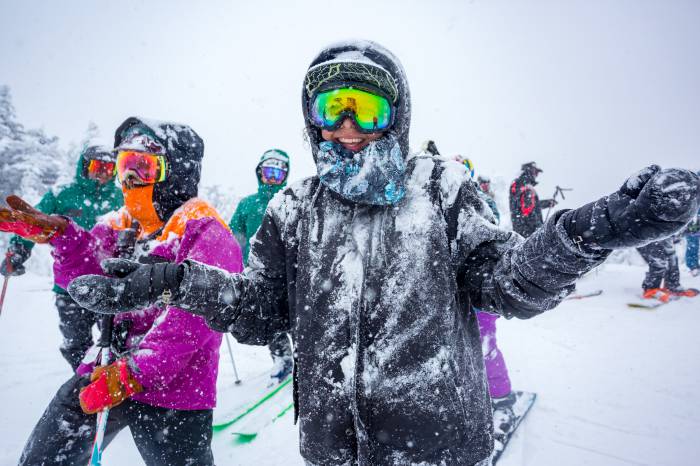In celebration of its new film, ‘One World,’ Burton and Mountain Dew partnered to create a snowboard with all-new construction and no bindings.
The Burton Family Tree Backseat Driver provides simple, fun, downhill access — from backyards to urban hills and backcountry slopes. And for 2021, Burton’s limited-edition “One World” version of the board will have a recycled plastic core.
Naturally, we decided to take one for a spin surfing some pow. “Pow surfing” is a straightforward way to enjoy deep turns while avoiding crowded resort days or unstable out-of-bounds snowpack.
A combination between a snowboard and surfboard, each pow surfer’s shape, profile, and material composition offer a unique feel underfoot. Burton’s One World Family Tree Backseat Driver Snowboard stands out for its float and nimble ability.
In short: The Burton One World Family Tree Backseat Driver Snowboard is a durable, reactive, steerable pow surfer. The topsheet has two aggressive stomp pads for excellent back and front foot-to-board contact. And for expert or beginner snowboarders, this ride is one of the most affordable choices on the market.

Burton One World Family Tree Backseat Driver: Snowboard Review
I rode the One World Family Tree Backseat Driver Snowboard down snowy slopes on the periphery of Crested Butte, Colo. I also snowmobiled into the backcountry with the surfer to explore steeper, longer descents.
Due to volatile avalanche conditions, I rode faces below 30 degrees. I hiked between each run: setting the bootpack is the longest, most challenging lap. While I live near Crested Butte Mountain Resort, pow surfers are not meant to slash groomed runs, hardpack, or ice.
This directional board features a flat-to-rocker profile with a 25 mm taper, which pops the nose up in the snow. With the board’s super setback stance, I immediately noticed its pivot power and quick turn initiation. I knew where to position my feet thanks to the stomp pads’ diagonal rows of sharp lugs.
I appreciated the security of my foot placement atop those nubs, but they made mid-run adjustments less fluid. Not all pow surfers have an integrated metal edge like this one. I could easily dig the board sideways into slopes to situate my feet before dropping in. And the board diced through wind-affected snow.
The board comes in one size only: 140 cm with a 260 mm waist. This makes it ideal for a 120- to 180-pound rider. Other wider boards offer more stability and smoother planing but less reactivity for turns. The extruded base means it’s naturally speedy and requires nominal waxing and maintenance.

Burton’s Budget-Friendly Backseat Driver
Check Price at BurtonBurton One World Family Tree Backseat Driver: Recycled Plastic Core

Pow Surfing: Popular Pastime













